Misc
[INTERVIEW] Can AI Consent? An Interview With the Crew Behind ‘Black Eyed Susan’
Black Eyed Susan was a stand-out hit at Brooklyn Horror Film Fest this year. In the film, the down-on-his-luck Derek (Damian Maffei) is coerced into product testing Susan (Yvonne Emilie Thälker), a life-like sex doll meant to be able to take a beating and bleed and bruise like a real person. Susan’s complex AI leads to conflicted feelings from Derek. The audience at the fest was open to the challenge of Black Eyed Susan’s taboo and transgressive subject matter. To gain a little more insight into the film, I talked with writer and director Scooter McCrae and lead actor Yvonne Emilie Thälker.

Black Eyed Susan was a stand-out hit at Brooklyn Horror Film Fest this year. In the film, the down-on-his-luck Derek (Damian Maffei) is coerced into product testing Susan (Yvonne Emilie Thälker), a life-like sex doll meant to be able to take a beating and bleed and bruise like a real person. Susan’s complex AI leads to conflicted feelings from Derek. The audience at the fest was open to the challenge of Black Eyed Susan’s taboo and transgressive subject matter. To gain a little more insight into the film, I talked with writer and director Scooter McCrae and lead actor Yvonne Emilie Thälker.
[Ed. note: This interview has been edited for length and clarity.]
An Interview with Scooter McCrae and Yvonne Emilie Thälker

Horror Press: Where did the inspiration for the film come from?
Scooter McCrae: It came from the deepest darkest recesses of my usually very sunny, open, and fun mind. There was no inciting incident that led to the screenplay being written. I was very much thinking about being a guy, and getting older, and thinking “Everything’s been really good” but even with that there’s certain things that we think about that tend to just go dark. I find that a great place to play. It helps give the lighter moments their weight.
HP: Chuck Palahniuk’s short story Exodus has similar themes and mentions “turning people into objects and objects into people. How does that idea apply to Black Eyed Susan?
Yvonne Emilie Thälker: We’re asking ourselves the question of “what is a person?”, and that goes back to Frankenstein. That’s one of the wonderful things I love about sci-fi movies and, to an extent, horror movies. Black Eyed Susan is a mash up. It is kind of asking a lot of those same questions: Is how you treat objects a reflection of how you treat people? How do we treat an AI that mimics a human, and how does it reflect on us? We write sci-fi and horror to examine our fears around humanity.
SM: To Yvonne’s point, really good science fiction is about sociology. It’s not about the technology itself. You know, that’s a bit of, as I like to say it’s the cheese and the mouse trap.
We live in a world where corporations are people, and real people don’t even get the same respect or tax breaks that fucking corporations get. There’s just so much inequality between objects and people. And sometimes I think objects get the better deal and people get the raw deal, and sometimes it works the other way around as well. But in science fiction especially, there’s going to be a point at which people and technology are just simply going to meet, and there’s going to be some kind of sociological showdown trying to figure out who gets what rights and who gets to say what, and which one has more validity.

Photograph by Marlon S. Row
HP: Yvonne, What was it like to play a role that is highly gendered and objectified as a nonbinary person?
YET: It’s probably impossible to put all of my ideas about my own gender and the role into a succinct couple of words, because I think aspects of my gender can be very fluid. They can also be kind of agnostic- I’ve got other things to worry about. Every nonbinary person is different. As a model too, there are times where being in a very feminine dress or role for the camera feels like drag. It feels like a thing I’m putting on, but it’s not a full reflection of who I am. But that’s what acting is.
I really like the ability to shape shift. That’s one thing that people would sometimes tell me as a model throughout the years. To me, that’s a big compliment. I like the ability to be chameleon-like and look one way in one shot and then very different in another.
So I really relish the opportunity to play roles that are very much not me, even if there probably is a twinge of feeling slightly uncomfortable being in this kind of very specific, objectified feminine space. I’d love the opportunity to play other types of characters and other types of genders that I’m not.
HP: It’s also empowering to see another nonbinary person in a lead role!
YET: That’s so wonderful to hear! That is the main reason why I decided to be assertive about my pronouns and my identity early on. I think it is important to be myself and an example for others. Seeing yourself represented is so important and can help people not just to come into their own, but also let them know that they belong in this world.
SM: I like what you’re saying too because the representation isn’t the point of the character or the story.
HP: I think a lot of times, people who might not know a trans person only think of us as our identity and don’t realize that we have full lives outside of that.
HP: What does it mean to have a sexual relationship with someone or something who can’t consent? Especially when they might not be a person, but look like one.
SM: That goes to like vibrators or dildos or fake pussies to an extent. Are they willing participants? You just don’t think of it that way. The fact that the doll in the movie has an AI, that’s what is causing confusion; the fact that it has the ability to give off the impression of having sentience. And with sentience comes the question of consent.
I’d like to think that the movie does talk about it. And the great thing about being a writer or a filmmaker is that I get to ask all the questions I want, and I reserve the opportunity to not have to ever answer them. That’s art. You don’t have to answer these questions, but raising them is what’s important.
YET: I would say for me, I actually feel like Susan consents. She’s designed to not only physically be able to take a beating, but to kind of want it. So there’s that issue of: she’s designed to consent. Is that really consent? It is possible to be in BDSM culture and to want to take a certain level of violence. You are consenting to it and you want it because it is cathartic for you in some way. But you know, the story of Susan, I think goes beyond that. For me, the sticky issue is more: how are you okay doing this to something so human like and not doing that to a real human?

Pictured above, young Scooter on Adult Film Set. Photo provided by Scooter McCrae
HP: I’m wondering what that does to our conditioning. Also in terms of what we see about heterosexual relationships in the media and pornography.
YET: It does influence us when all the women are represented as young and small and beautiful and mostly white and able-bodied and it’s like, there’s no stretch marks, there’s no chipped nail polish. But then when some men encounter real women they’re like, “Oh my God, when this woman that I went on a date with took her makeup off, she’s got acne and under eye bags”. I think that’s a very specific kind of misogyny working there.
It leads to this type of paranoia with people thinking, “Is my body good enough? Is my skin clear enough? Am I fit enough? Am I strong enough?” I think a doll like Susan could be very harmful in terms of if men were routinely using these dolls and abusing them, and then, they try to have a relationship with a real person, and the real person is like, “Yes, I’m into BDSM, but we need to use these safe words and safe practices. I need to feel like I trust you.” Then it shatters the illusion. We’re seeing the beginning of that in the world of Black Eyed Susan, where it’s going to lead to these unhealthy expectations, and, in my opinion, lead to actual abuse of actual humans.
SM: Yeah, addressing the illusion is important. Understanding why something is an illusion is part of the fun of it. It doesn’t take away from the pleasure factor. If you’re doing it right, it adds a level of confidence. When you go to see a movie, you’re not going to say, “It’s all fake. Well, what a waste of my time.”
As someone who does like pornography, and quite a bit, I’ll bring up Sturgeon’s Law, which is that 95% of everything is shit. And this applies to pornography, probably more than anything else. You watch whatever you want, as long as you know that it is, of course, fake and that the people making it are professionals.
In fact, I used to shoot and edit porn, and what’s interesting here is that the people who were making them were basically friends. They all work locally in the industry, but when they would get together, it was a lot of fun. People got paid. They were shot quickly and low-budget, but people were actually having a great time. People were cumming. We’d shoot them in a day or two at most, and it was just the best possible representation of how good pornography can get made by people having a good time and wanting to make stuff that gets out there and promotes just having fun. The worst shoot I ever did, some people came in from LA for me to shoot in a hotel: absolutely the worst porn shoot I ever had to do in my entire life. They were just literally snorting coke, and just, it was just awful. It was the worst cliche. And I couldn’t even believe I was there. It was just like watching zombies engage in calisthenics.
Many thanks to Scooter McCree and Yvonne Emilie Thälker for talking the time to talk with us at Brooklyn Horror Film Festival.
You can preorder Black Eyed Susan via Vinegar Syndrome here!
Misc
See You At Night Frights LA 2025!
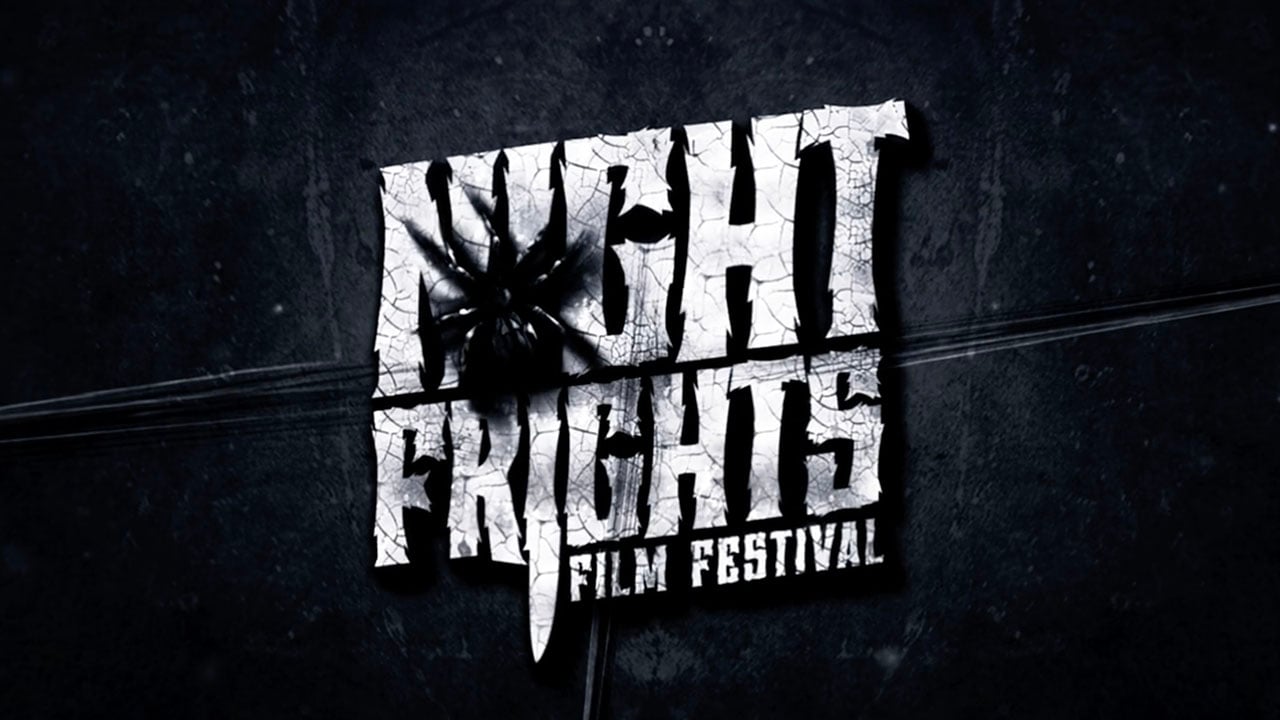
In just a few days, Horror Press will be leaving the East Coast for the sunny rays of Los Angeles. Why, you may ask? For the Night Frights LA film festival! Night Frights LA was founded by the Winchester brothers (no, not Sam and Dean). Their goal? To celebrate bold, original horror and give independent creators the spotlight they deserve. What does Night Frights LA have to offer? Let’s take a look!
Location, Location, Location
From 10 AM to 10 PM on September 20th, Night Frights LA will take place at the Los Angeles Convention Center in the West Hall. The convention center will also be host to Horrorcon Los Angeles on the 20th and 21st. You can park in the West Hall garage and head on directly to the theater on the 2nd floor.
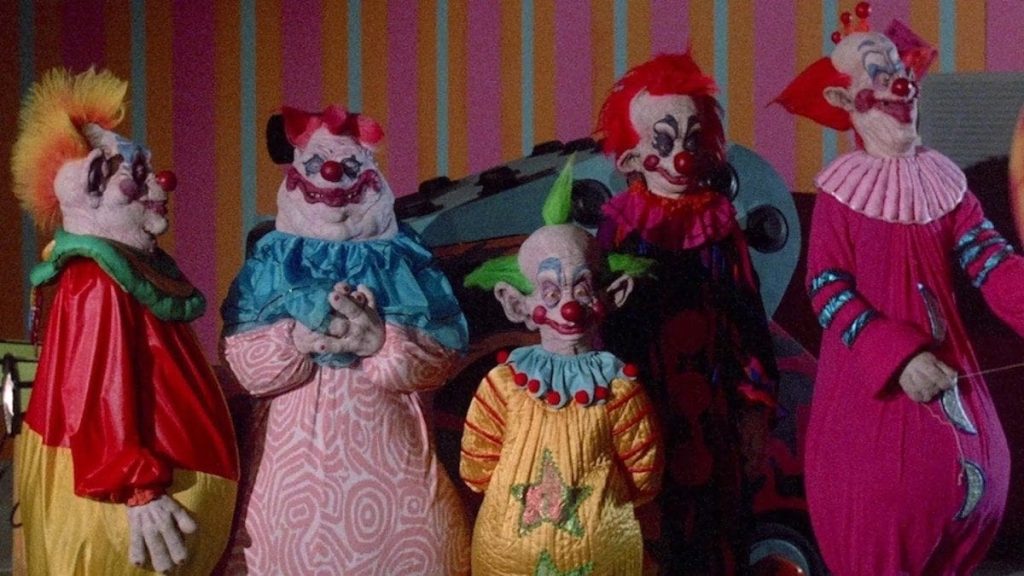
What’s Screaming?
A film festival is only as good as its lineup, and Night Frights LA has a bloody, fun lineup for us! Doors open at 9:30 AM, and the festival kicks off at 10!
The festival kicks off with Short Film Block: Best in Blood. The short films included are: Ghosted, Playback, Knife, No Slasher Here, A Simple Life, Chickenboy, Banjo, Where the Shadows Feast, Love Forevermore, and The Carvening.
After a short break, the Horror Writers Association will host a panel called Page to Screen, hosted by Kevin Wetmore.
From there, it’s time to get back to the short films. Short Film Block: Mental Carnage will include: Vivir, Devil’s Prism, The Specter of Christmas, Contraction, The Vanity, The Last Thing She Saw, and Keep Coming Back.
The final set of shorts, Short Film Block: Planet Terror, will include: Umbra, La Croix, The Overkill, The Smell of Sin, Bananahead, and The Nature of Death.
A Special Screening ONLY at Night Frights LA
You know we love short films over here at Horror Press, but once the shorts are done, Night Frights heats UP with a special screening of the first-ever feature film to be screened at Night Frights LA with Teddy Grennan’s Catch a Killer. This screening will be followed by a Q&A session featuring the cast and crew.
But wait! There’s more! Starting at 6 PM, there will be a Q&A with John Massari (composer of Killer Klowns from Outer Space)! And this wonderful Q&A will be followed up with a screening of Killer Klowns from Outer Space, sponsored by us here at Horror Press! Sounds like a hell of a time to me! The festival will close out at 8 PM with the awards ceremony hosted by Elias Alexandro!
So what are you waiting for? Join me, and horror fans from around the world, for a day full of horror BY horror lovers.
Badges for Night Frights LA start at $20 and can be picked up here! See you there!
Misc
Who’s The Better New Jersey Horror Icon: Jason or Chucky?
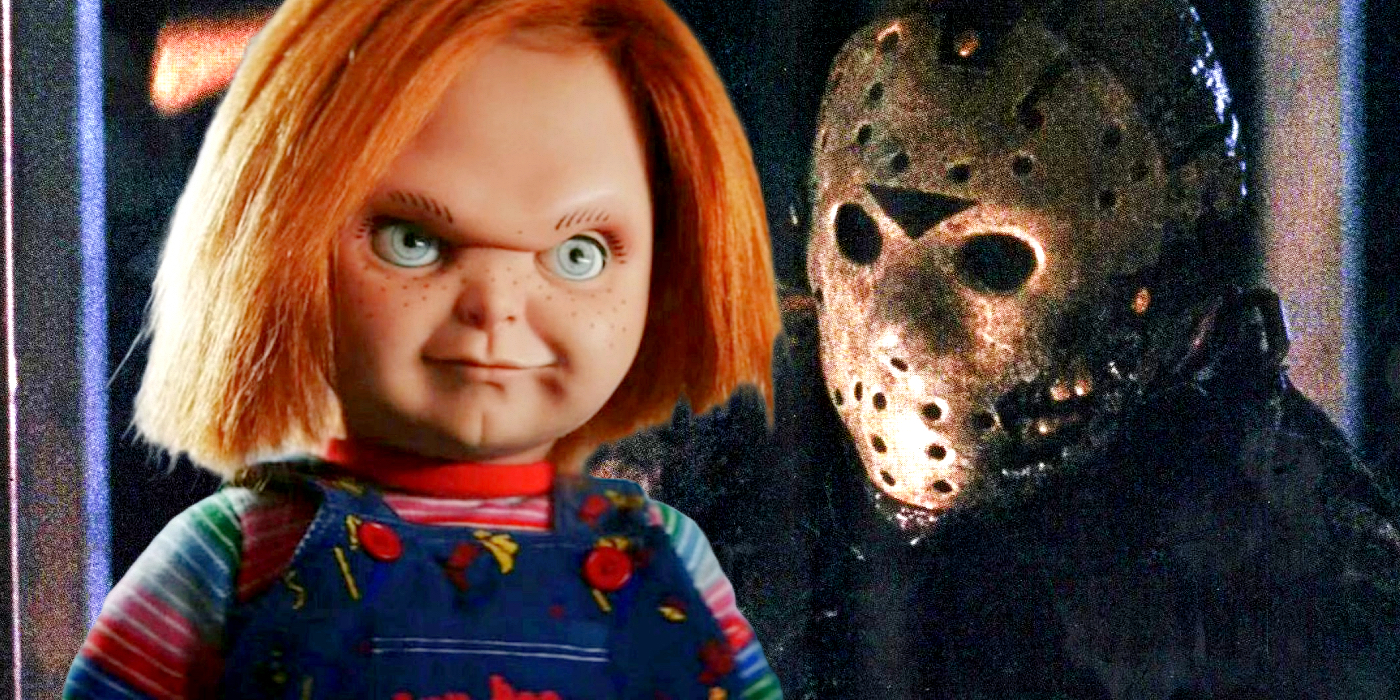
This month at Horror Press, the theme is New Jersey. As a dyed-in-the-wool slasher guy, the first horror-related thing that comes to mind when thinking about the Garden State is obviously the Friday the 13th franchise. The first movie was shot in New Jersey, and the majority of the subsequent movies are set there when they’re not wandering off to Manhattan or space. However, Mrs. Voorhees and her son Jason aren’t the only New Jersey natives to have spawned a slasher franchise.
After all, the bloodthirsty Charles Lee Ray, better known as the killer doll Chucky, grew up in Hackensack. So what do you do when you have two slasher villains on your hands? You have them battle, of course. In order to figure out which killer is the best New Jersey horror icon, we’re going to compare the two in a variety of categories, but the one that will be weighted the heaviest is obviously “New Jersey-ness.” Without any further ado, let the head-to-head begin!
Which Horror Icon is the Most Jersey?
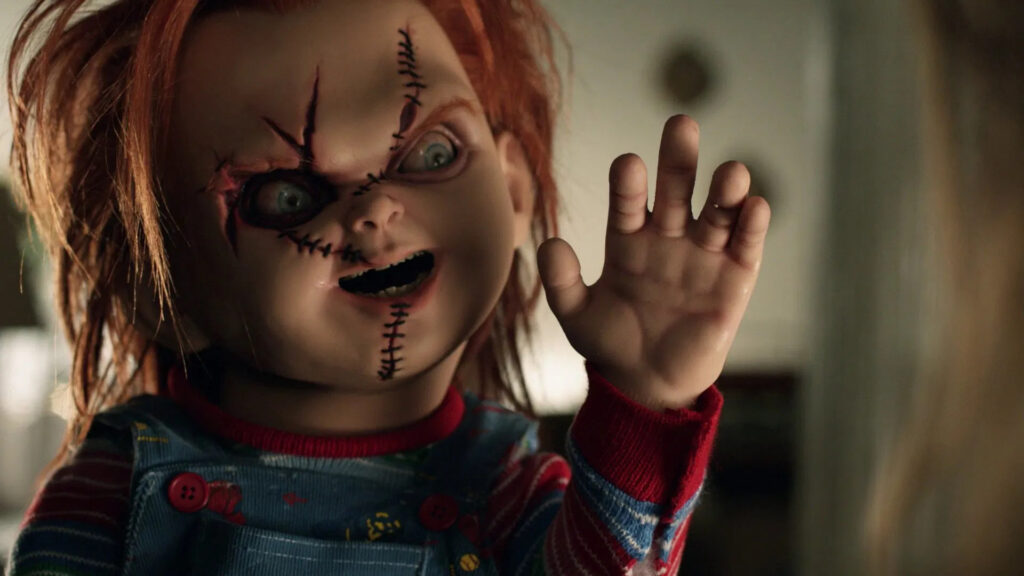
Kill Count
Jason: 179 (give or take)
This total spans 10 movies, including the 2009 reboot, but not the original 1980 Friday the 13th or 1985’s A New Beginning (neither of which feature Jason as the killer). Nor does it include non-body count deaths like the remaining teens on the sunken Lazarus in Jason Takes Manhattan or the entire population of the destroyed Solaris station in Jason X, so if anything, the actual number is even higher than this. This makes for an average of 17.9 per movie.
Chucky: 104 (give or take)
This total spans seven movies and three television seasons. If we count that as a total of 10, Chucky hits an average of 10.4 per outing.
Winner: Jason
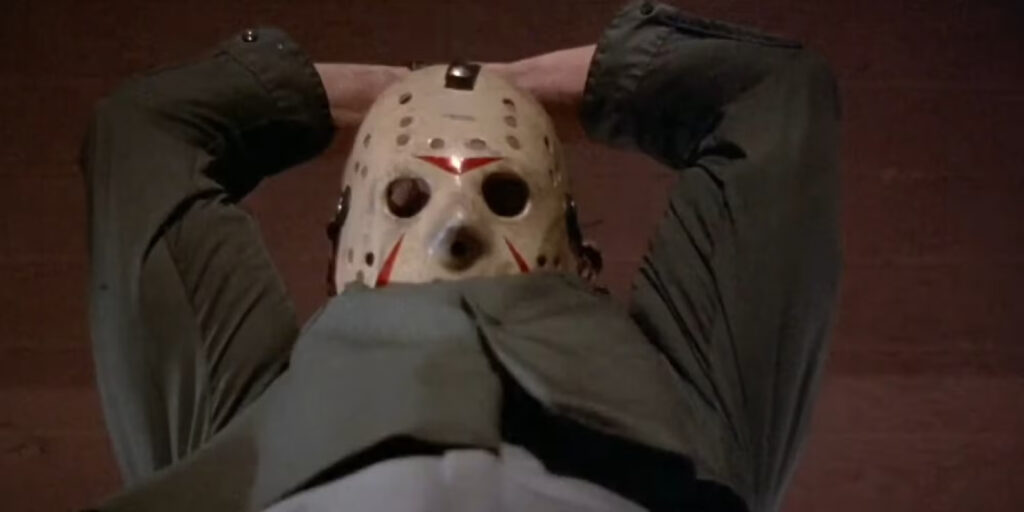
Personality
Jason: He does have a lot of creativity to express when it comes to finding new and exciting ways to turn people’s insides into their outsides. And that hockey mask adds a certain amount of flair, true. But this big lug is the strong and silent type. There’s really not a lot going on with him.
Chucky: The fact that he talks certainly helps him stand out, but regardless, Chucky is all personality from top to bottom, whether it’s the wholesome and child-friendly appearance that he presents to the world when he’s not pursuing his insidious desires or the true self he exposes once you get to know him a little better. He’s narcissistic, bad to the bone, and loves nothing more than wise-cracking while doling out creative kills. He’s also smart enough to design certain murders to cast the blame on others. What a guy!
Winner: Chucky
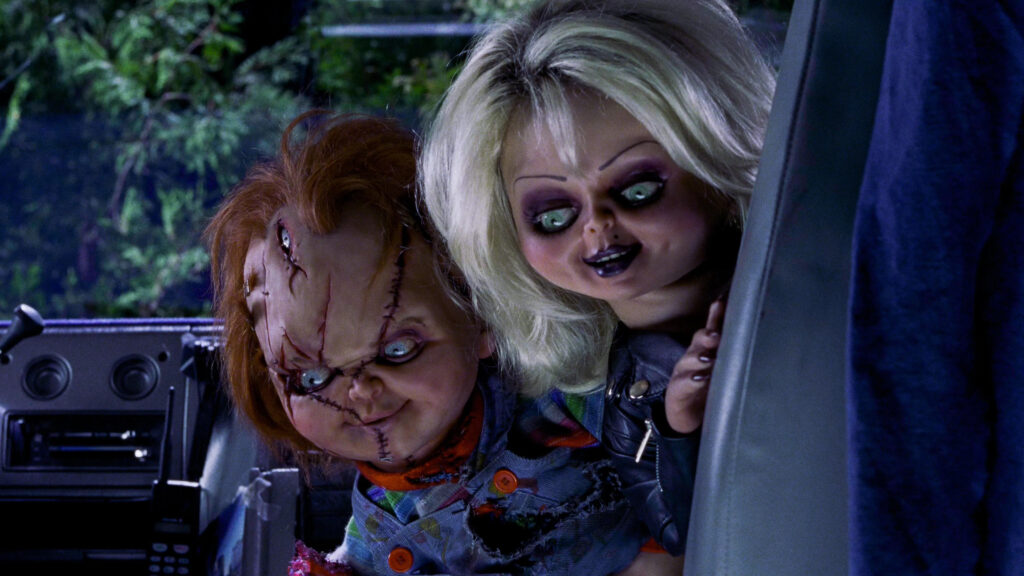
Franchise Quality
Jason: Friday the 13th has some high highs. For instance, The Final Chapter is the platonic ideal of the 1980s slasher movie. However, while the franchise generally tends to be relatively reliable and consistent, those lows can be crushing. Everybody disagrees on which are the lowest, which adds some benefit of the doubt here. Still, whether it’s A New Beginning, Jason Takes Manhattan, Jason Goes to Hell, or Jason X (which is my personal pick), there’s gonna be at least one movie you don’t like here.
Chucky: Not only is the Child’s Play franchise consistent, but it is all in strict continuity (minus the 2019 reboot, which we’re pretending doesn’t exist). It has some glorious highs (Bride of Chucky is one of the iconic 1990s horror movies) and its lows aren’t all that bad. Child’s Play 3 tends to be people’s least favorite, but even that one is a totally watchable, if lightweight, horror romp. (If Seed of Chucky is your lowest-ranked, please come see me after class.)
Winner: Chucky
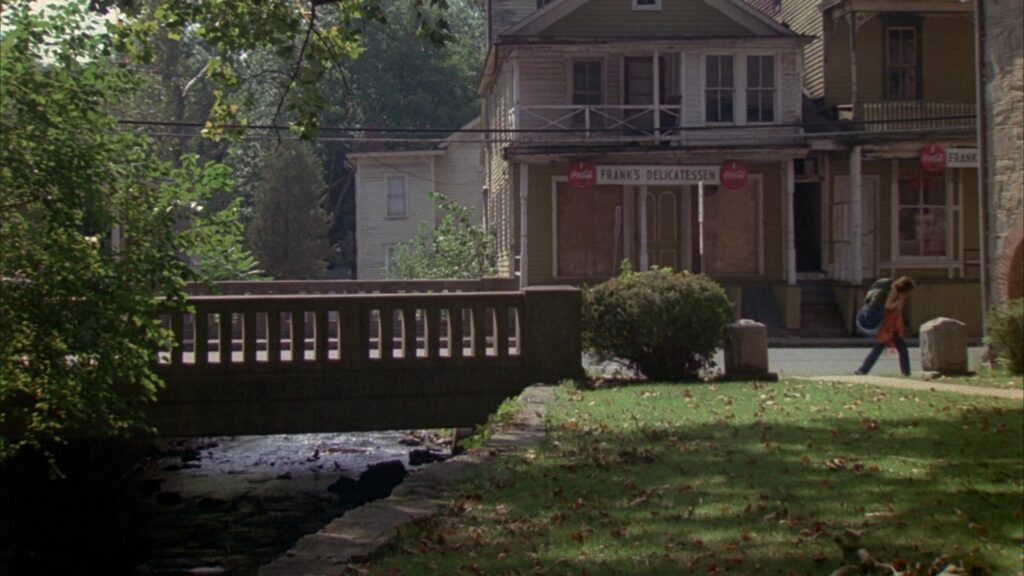
New Jersey-ness
Jason: Now, there’s a lot to break down here, both in-universe and on a meta level. First of all, one huge point goes to Jason because the majority of his slayings are committed in New Jersey. Jason was also canonically born in the small (fictional) town of Crystal Lake, growing up there as well, as shown by the inexplicable Voorhees family manor in Crystal Lake township that appears in Jason Goes to Hell. In fact, beyond going to Manhattan, space, etc., there is no evidence that he has ever left Crystal Lake and its surrounding environs more than a handful of times (mostly for killing – for example, his field trip to take care of original final girl Alice Hardy in Part 2).
However, on a more meta level, very few of the Friday the 13th movies were shot either partially or entirely in New Jersey. They were mostly shot in California, the South, or Canada. Not very Garden State, if you ask me.
Chucky: Chucky gets a huge boost from the fact that he was raised in Hackensack, New Jersey, which is actually a real place as opposed to Crystal Lake township. However, most of his killings from the franchise do not take place in New Jersey. While the Chucky series rectifies this by setting season 1 in Hackensack and featuring the killer doll returning to his hometown in the modern day (alongside flashbacks of his antics as a youngster), his reign of terror has mostly taken place elsewhere. One additional demerit is that, as a human, he was known as the “Lakeshore Strangler,” having taken up residence in Chicago as an adult.
However, while Hackensack is a real place, the Chucky movies and shows don’t shoot there. In fact, as far as I can tell, not a single frame of footage was shot in New Jersey for the entirety of the iconic slasher franchise (which has been produced out of Canada for some time now).
Winner: Jason
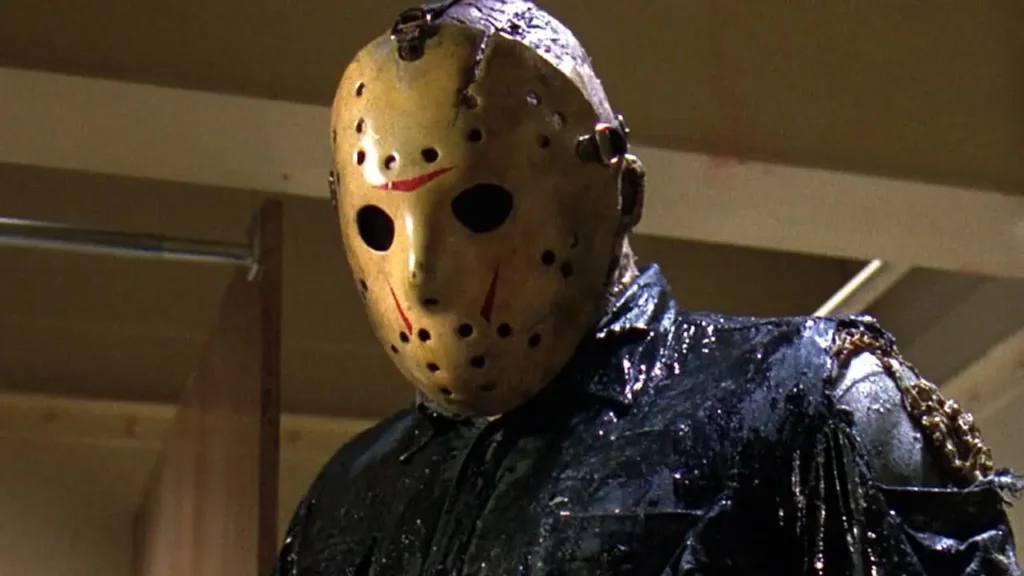
Winner
Because the New Jersey section is weighted to be worth two points, I can proudly proclaim that Jason Voorhees is the winner! While this makes sense, considering the fact that he has been an icon since before Chucky was a twinkle in Don Mancini’s eye, the killer doll put up a tough fight, going neck and bloody neck with the Crystal Lake behemoth.























